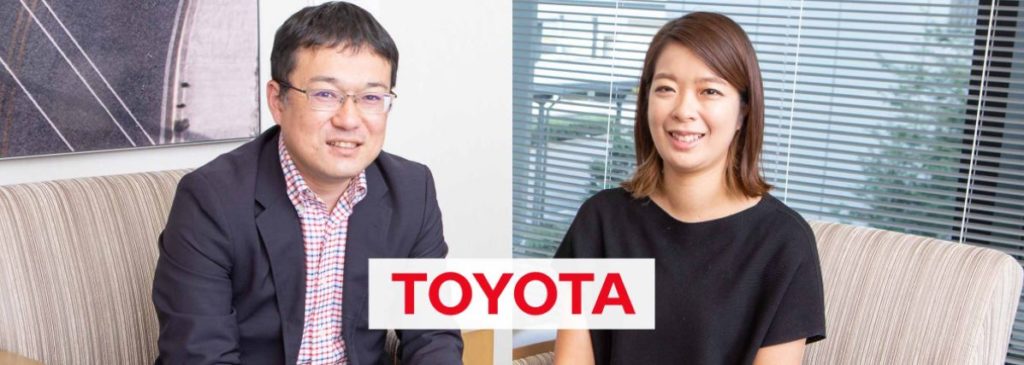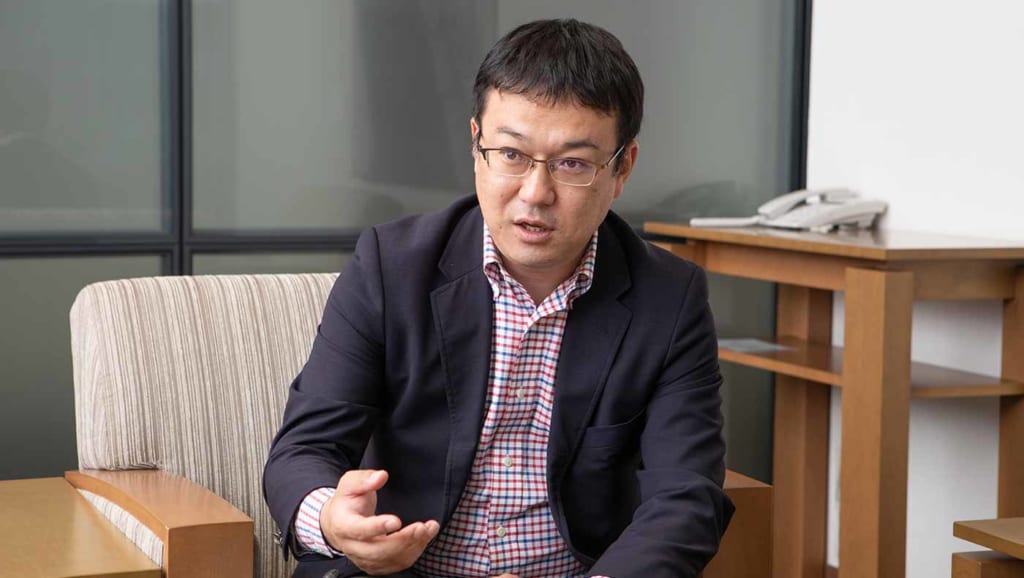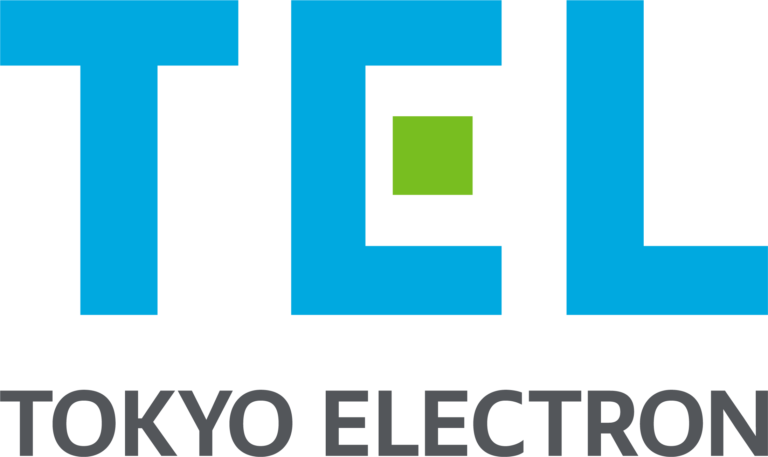Toyota Motor Corporation
| Employees: | 361,907 | ||
|---|---|---|---|
| Founded: | August 28, 1937 | Corporate Website: | global.toyota |
| Employees: | 361,907 | ||
| Founded: | August 28, 1937 | ||
| Corporate Website: | global.toyota | ||

The introduction of the GLOBIS Manabihodai platform was an effective measure to respond to changes in our business domain.
Tomoki Nakagawa, Group GM HRNurturing Self-led Learning and Teaching with a Focus on the Outside World

Toyota Motor Corporation’s Human Resource Development for Transformation into a Mobility Company
Toyota Motor Corporation
Tomoki Nakagawa, Group General Manager, Human Resource Development Department
Miyuki Ito, Senior Manager, Human Resource Development Department
As one of Japan’s foremost global companies, Toyota leads the automotive industry in the midst of rapid business changes. Toyota is implementing new measures to develop human resources capable of working in borderless business domains. The GLOBIS Manabihodai platform (Japanese: グロービス学び放題, gurōbisu manabihōdai) is one such measure.
Currently, more than 2,000 employees at Toyota are studying through this service. We asked Group General Manager Tomoki Nakagawa and Senior Manager Miyuki Ito of the Human Resource Development Department about Toyota’s vision and the value of new learning methods.
New business domains require expertise and people skills
Please tell us about the type of people that Toyota is currently seeking.
Nakagawa: The automotive industry is currently undergoing a major change. We often see the acronym “CASE” in various media reports. This stands for connected (linking with smartphones, web services, apps, etc.), autonomous/automated, shared, and electric. These new trends are forcing automakers to proactively look at new technological fields such as AI and IoT.
You might say that the traditional automotive industry has seen relatively few major changes. Until now, Toyota’s competition has been with other automakers, and we have fought such companies domestically and globally. But that battle was limited to automobiles.
Now it is borderless. Toyota’s competition is no longer just with other automakers. We must proceed with new technologies while continuing to value our existing business domain. What kind of human resources are needed for this? Thinking about this question, we reflected on the issues we found in our existing business domain.
What did you determine?
Nakagawa: The fact is that Toyota is a large and very influential company. We believe that some of our employees misunderstood this and acted arrogantly, or with excessive confidence. There were times when we were reminded of this by our subcontractors and business partners, and it was also seen as an issue within the company.
Of course, there’s nothing wrong with being proud to be a part of Toyota. However, if taken to excess, this can go in a negative direction. We thought this had to change.
Ito: In this new borderless domain, I feel that it will be important to recognize the strengths of various industries, companies, and people, and to collaborate with them while enhancing competitiveness. In other words, we cannot compete unless we have the human resources that make people want to work with Toyota or engage with our employees. We need to develop human resources who are well evaluated by society, not just within the company.
So you reviewed the human resource development policy from a more fundamental perspective?
Ito: Yes. We broke down this policy and set two goals for human resource development. First, we must have a high level of expertise as businesspeople. Second, we must improve our people skills to be selected by others. We want our employees to have aspirations and to be a positive influence on the people around them.
Nakagawa: I believe that the pursuit of these two goals is based on the strengths that Toyota has fostered over the years.
Throughout its long history, Toyota has handed down the “Five Main Principles of Toyoda.” These were released in 1935 to arrange and codify the ideas of Sakichi Toyoda, the founder of the company. These are important principles for the Toyota Group.
In addition, we believe that it will be important to appreciate the strength of the Toyota Production System (TPS) and our approach to cost reduction that we have valued. Based on this foundation, we hope to develop professionals who demonstrate a high level of expertise and have the people skills to involve others.
From “teach and be taught” to a “self-led learning and teaching” environment
How did you decide to introduce the GLOBIS Manabihodai platform as one of your new human resource development measures?
Nakagawa: I felt that the introduction of the GLOBIS Manabihodai platform was an effective measure to respond to changes in our business domain.
When Toyota was competing in the automotive domain, we developed our human resources primarily through on-the-job training. Our slogan at that time was “teach and be taught.” Having been in the competitive automotive domain for a long time, we have many professionals within the company who are thoroughly adept at automotive manufacturing. Such in-depth knowledge is usually possessed by employees with long experience. The older employees teach the newer, younger employees, and in the next generation, the ones who were taught become the ones who teach. This functioned as a “teach and be taught” system to pass on skills.
However, this is also no longer suited to today’s environment. The automotive industry now needs new technologies such as AI and IoT. But we, who have thus far been basically mechanical engineers, do not have many people who are confident in these new domains. In fact, there is an overwhelming shortage of people in these domains.
To realize a transition to a mobility company, it is essential to take on new challenges and reforms in conventional car manufacturing. Each employee will be required to think and act independently in workplaces that are closer to customers. The HR Department had a great sense of crisis about this, and we changed the concept of human resource development to “self-led learning and teaching.”

Does this mean that employees need to actively seek to learn, rather than wait to be passively taught?
Nakagawa: To learn new things, it is important to go outside the company and absorb new knowledge. I believe that we need to create a culture in which employees, regardless of age or experience, teach each other what they have learned outside the company.
Ito: To respond to both the existing automotive domain and new domains, we are also making major revisions to our personnel system and evaluation system. We believe that it is necessary to enable each individual to make the most of their abilities and put the spotlight on those who are working hard. To maximize our capabilities and connect them with speedy execution, it is essential that we learn on our own and enhance our expertise and people skills.
I find it surprising that even a company as large as Toyota needs to create an environment where employees can go outside the company to learn.
Nakagawa: If the premise is that we will only compete in the automotive industry, the most direct way to grow is to improve our technology. I think our employees were in fact satisfied with this. However, as I mentioned earlier, the environment surrounding the automotive industry is changing dramatically, and now we need the mindset to proactively go out into the world. I think it is important for HR to make this to happen.
Toyota Motor Corporation is based in Toyota City, Aichi Prefecture. Even in this day and age, I feel that there is a gap in terms of information and opportunities between here and Tokyo. There is a limit to the information you can physically access. It’s difficult to casually have morning meetings with people from other companies, for example. We thought that if we could prepare a platform for employees to learn on their own as company policy, it would lead to opportunities for them to start learning new things.
Ito: In the past, our work tended to be limited to Toyota and our group companies. However, with the emergence of new competitors, I don’t think we can survive simply by talking in the common language of the automotive industry. What does the customer want? How are the needs of the world changing? We need to get the real feel of this and reflect it in our products.
Did you review programs offered by other companies besides GLOBIS when you were considering introducing the learning system?
Ito: Yes. We chose the GLOBIS Manabihodai platform because, in addition to a curriculum that allows students to systematically study business administration, it has a rich content in the area of organization and leadership, and each video is edited to be short so that students can learn efficiently even in their spare time.
At Toyota, work is highly segmented. For example, I am in charge of training within the HR Department, but I am not very familiar with the field of labor affairs. In the Engineering Department, too, employees can easily improve their technical capabilities, but there are few opportunities to learn about the management of the company. I feel that the role of management in encouraging proactive behavior will become even more important. So in that sense, content that would allow students to learn the “big picture” of business, organization, and leadership was the best choice.
Unlike conventional training, GLOBIS Manabihodai allows participants to learn regardless of experience
More than 2,000 people have now participated in the GLOBIS Manabihodai program since you opened enrollment. Did you anticipate that level of interested? And how did HR introduce the program?
Nakagawa: When we introduced the program, we were worried about how many people would participate. Up until now, in-house training has been mainly bottom-up, with employees uniformly required to take training when they reach a certain number of years of experience. Very few have taken training on their own initiative. In other words, only the company was providing education, and we were concerned that employees had lost the will to learn on their own.
However, once we launched the program, we discovered that our employees’ desire to learn was much stronger than we had anticipated. Of course, I think the appeal of the content provided by the GLOBIS Manabihodai platform was a big factor.
Ito: The main method of rollout was basic: placing displays in the company cafeteria, recruiting on the intranet. We also sent direct e-mails to those in key positions, people whom we as HR particularly wanted to participate.
Looking at the number of participants by job level, the most common groups are those in their thirties at chief level and those in their forties in the key positions above them, accounting for nearly 70% of all participants. I believe that these people are approaching the point where they are ready to take on new work, and they themselves are keenly aware of the changing environment. Many people participated because they wanted to gain new business knowledge.

Most conventional training programs require employees to take a course after a certain number of years in the company. How does GLOBIS Manabihodai stack up against such training programs?
Ito: The main difference is that they can be used for self-study. The program is operated completely separately from conventional training, and it’s open to anyone who wishes, regardless of years of experience in the company or the time of year. Since study is possible outside of work hours, participants don’t have to worry about putting their work on hold, which makes it a very flexible tool for employees. I feel that this has enabled us to make a significant change in our training system, as we did not originally have a full lineup of self-study options.
Once the training actually started, what was the reaction within the company?
Ito: One participant said, “I was able to relearn basic theories.” This is also the case in HR, but until now we have mainly learned from the experience of our seniors in the workplace and tacit knowledge within the department. There have been few opportunities to systematically learn various theories. In that sense, it’s great to be able to choose and learn the knowledge you need.
Nakagawa: There was also a response from the management level. After the introduction of the GLOBIS Manabihodai platform, we stopped accepting applications once we had received a certain number, but one manager, who saw that the program was packed with content that businesspeople should learn, asked us if we could resume accepting applications so that his subordinates could study on the program. We reopened the program in response. Another comment was that we should make this a company-wide standard.
Ito: Over the past few years, President Akio Toyoda and the rest of management have been giving the message that we must change. I believe many people have been inspired by such words.
Committed to the career development of each employee while upholding Toyota’s values
What are your future plans for using GLOBIS Manabihodai?
Ito: We would like to increase the frequency with which employees take courses, especially while they are highly motivated to learn, such as when they are promoted. We especially want those who are involved in management to think about how the company functions as a whole and how they should change their own work.
Nakagawa: Currently, HR is calling on management to support young people so that they can find meaning in their work. As the division of labor becomes more widespread, people sometimes lose sight of what their job is all about. This is why we would like to see management convey the significance of their work, and for that reason, we would like them to understand the overall structure of the business. We believe that new learning is meaningful in terms of revitalizing the company, as well.
Our background of expanding production volume by following the manual for efficiency means there is still a culture of working passively. Many employees may be under the impression that work is something that is given to them. This is why we want to keep sharing stories of people who are learning new things. We will continue to recruit participants and hope that many employees will volunteer.
Finally, please tell us about your future plans for human resource development.
Ito: To develop human resources who can work independently, we want to emphasize the attitude of self-led learning. We plan to make further use of the GLOBIS Manabihodai platform and add more elective curricula that allow students to study whenever they want to.
As for the training that we have been conducting within the company, we would like to make it an opportunity for employees to think about how they want to grow at Toyota by addressing their individual aspirations and wants, as well as personal awareness. Recently, we have also created opportunities to learn afresh about Toyota’s values and history. We live in a time of change. It’s important to have in-depth knowledge of our company and value spirit.
Nakagawa: We have also incorporated the expertise and people skills Toyota seeks in its employees into our evaluation system. Continuing to humbly improve ourselves and work hard for other people, we hope to grow as an organization that is committed to the career development of each and every employee while upholding these Toyota values.


